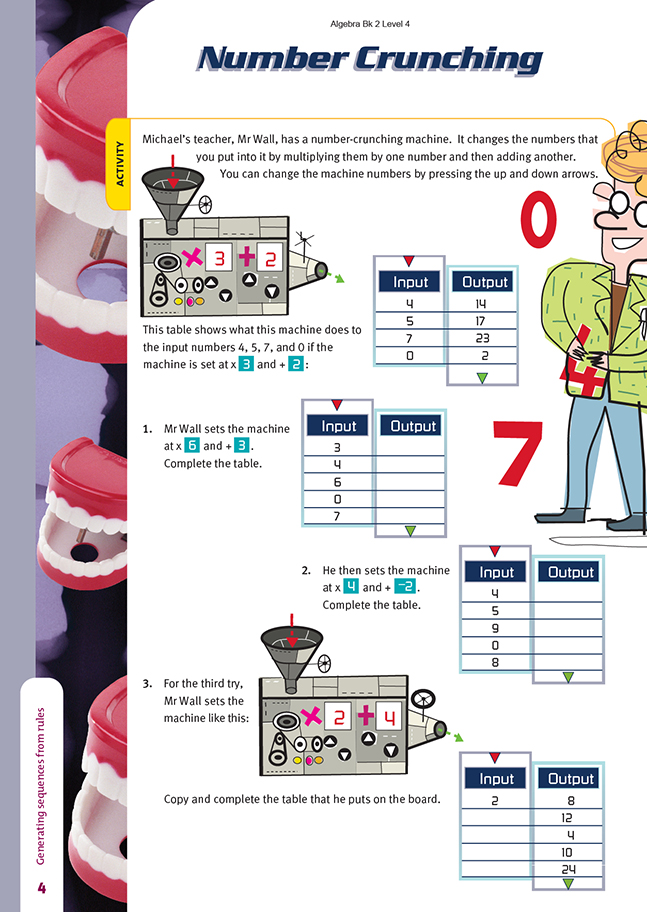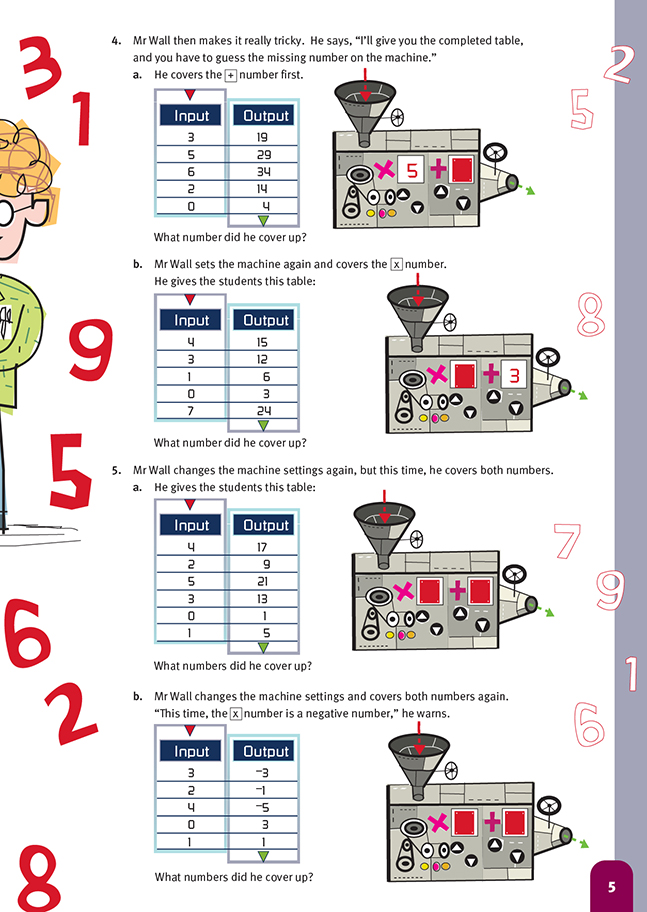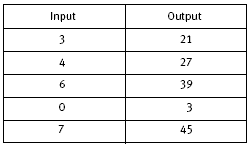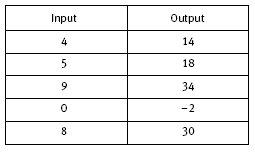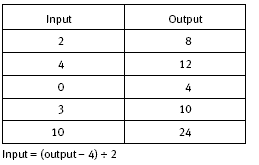This is a level 4 algebra strand activity from the Figure It Out series.
A PDF of the student activity is included.
Click on the image to enlarge it. Click again to close. Download PDF (252 KB)
write the rule as a simple linear equation
use a rule to complete a number pattern
FIO, Level 4, Algebra, Book Two, Number Crunching, pages 4 -5
In this activity, students investigate “number machines” that produce output numbers from given input numbers.
In questions 1 and 2, the students use the machine operations to calculate output numbers. So, for example, the machine settings x 4 + 3 make the input number 6 into 6 x 4 + 3 = 27. The machine settings x 6 + –2 make the input number 5 into 5 x 6 + –2 = 30 + –2, which is 28. (Note that adding –2 is the same as subtracting 2.)
In question 3, the students work out the input numbers starting with the output numbers.
To do, this they must put the machine “into reverse”. Notice how + 4 changes to – 4 and x 2 changes to ÷ 2.
The machine reversal subtracts 4 from 12, giving 8, and then divides 8 by 2 to give 4. So the original input number is 4. The students should convince themselves that this result is correct by running the machine forwards and checking that an input of 4 gives the desired output of 12.
In question 4a, the students have to work out the second machine number, which has been covered.
This is the same as working out the missing value in the equation 15 + = 19, which gives = 4. Using any of the other rows in the table to form equations will give the same result. Some students may realise that solving this equation is particularly easy when the input is 0. In this case, we have 0 x 5 + = 4, or = 4. In other words, the + setting of the machine is the same as the output for 0 for the machine.
This technique can be used whenever the + setting of the machine is unknown but the output for 0 is given.
In question 4b, the students have to work out the first machine number, which has been covered.
One way to do this is to put the machine into reverse.
This reverse machine first works out 15 – 3 = 12 and then divides 12 by the covered machine number to get 4. So 12 ÷ = 4, giving = 3.
In question 5, both machine numbers have been covered. In question 5a, the machine can be represented as
The students can try different machine numbers to see which ones work. For their machine numbers to be the correct numbers, they must also work for the rest of the data in the table. For example, the students might choose x 3 and + 5 , which work for input 4 but which won’t work for the other input data listed in the table.
Students who use the technique mentioned earlier, where the + setting for the machine equals the output for 0, will see that this setting is 1. By solving an equation such as x 4 + 1 = 17 (from the first row in the table), they will then be able to calculate that the times setting is 4. Other students may use a trial-andimprovement
problem-solving strategy to achieve the same results. In either case, they should find that the machine numbers that have been covered are x 4 + 1 .
In question 5b, the students can once again use the “output for 0 = + setting” technique (in this case, 3) or the trial-and-improvement problem-solving strategy to find the machine settings. The only difference from the previous example is that, this time, the first machine number is negative. So they must multiply whole number input numbers by a negative number before they add another whole number. For example, when 2 is the input number for this machine, –1 is the input, and the setting is 3 (from “output for 0 = + setting”).
So what negative number is the input (2) multiplied by to get a number that becomes –1 when + 3 is added to it? –4 + 3 = –1, and 2 x –2 = –4, so –2 is the number we are looking for. When the students test – 2 + 3 with the other input and output numbers, they will find that they work in each case.
Answers to Activity
1.
2.
3.
4. a. 4
b. 3
5. a. x 4 + 1
b. x –2 + 3
